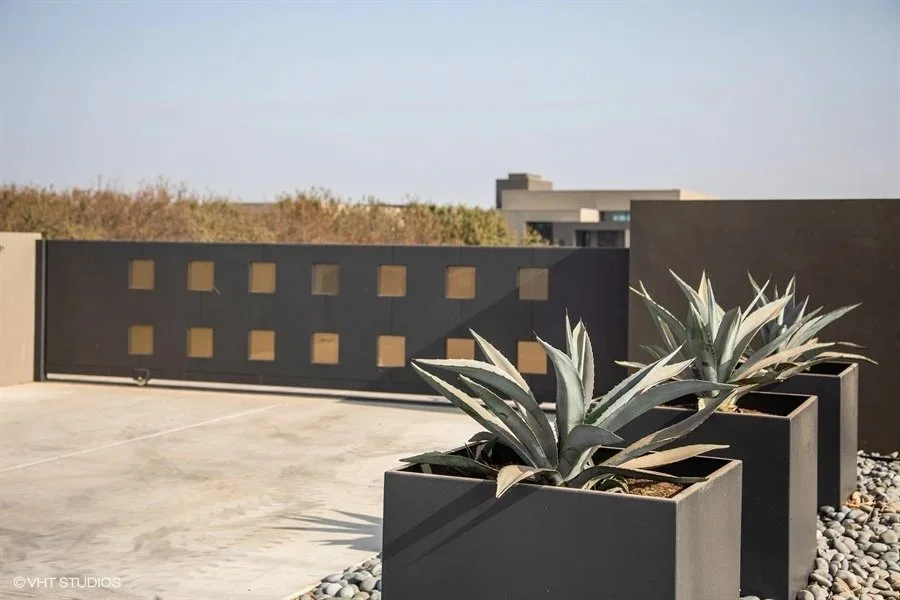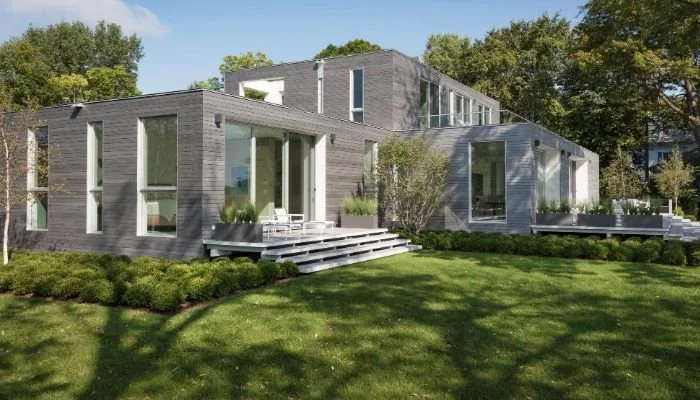The 7 Design Rules to Implement in Your Landscape Design Concept
Landscape design ideas help transform a commercial or residential space from a good one to a great one, but first, it’s important to understand the core principles.
Whether for commercial buildings or personal residences, landscape design is a critical component in making a space look great and feel inviting.
There are some distinct differences between commercial and residential projects. But there are also some common principles that can be applied to both.
So, before you start implementing your landscape design ideas in your plan, it’s important to understand what you’re trying to achieve and get a grasp on the best practices for bringing your vision to life.
Commercial vs. Residential Landscape Design
When you’re looking at commercial versus residential landscape design concept ideas, there’s a common thread: the goal is to make a welcoming and appealing space.
But there are also distinct differences between them in that they’re tailored to totally different audiences and often have completely different goals.
Commercial landscaping projects are generally meant to appeal to employees and clients. So, these landscape concepts are more geared at enhancing the look, appeal, and value of a space.
On the other hand, residential projects are all about building a better lifestyle for homeowners. The goal is to include features that are useful and serve a purpose — such as creating a comfortable place to relax.
Both commercial and residential landscape design concept ideas often share many common elements like pathways, children’s play areas, gardens, high-quality planters, furnishings, and fire features.
However, commercial projects generally require significantly larger products in higher quantities, meaning the budgets for commercial projects are generally much higher.
When it comes to mapping out your landscape design ideas, the reality is that failing to understand the differences between commercial and residential projects will likely result in a failed landscape design.
That’s why it’s vital for you to understand the common principles and rules that will help ensure success in both types of projects.
Landscape Design Principles
When it comes to landscape design concept ideas, Dixie Sandborn at Michigan State University believes there are six fundamental principles that should be incorporated into your plan:
Balance: This refers to a sense of balance between seeing and being which creates landscapes that are both inviting and visually pleasing
Focalization: Every good landscape design has a focal point where the viewer’s eye is first attracted
Simplicity: Great landscape design avoids clutter and keeps things simple and tidy
Rhythm and Line: Things in the landscape should be repeated with a standard interval, creating a rhythm, and lines should be created by things like the shape and form of the planters, sidewalks, and where the grass meets the pavement
Proportion: This refers to the size relationship of all the features in the landscape, including vertical, horizontal, and special relationships, and it extends to building size, lot size, plant size, areas of plantings, and use of landscape
Unity: This simply means that all of the components from the last five principles are working in harmony to create a great holistic design
Modern Elite Tapered Planters at the DoubleTree in Orlando, FL
The 7 Fundamental Rules of Landscape Design
According to many experts, the above-mentioned principles can be achieved by following seven fundamental rules of design when it comes to landscaping:
1. The Law of Significant Enclosure
This rule is based on the idea that people love gardens because they provide a sense of refuge.
For this reason, it’s important to create a sense of both enclosure and openness simultaneously.
This can be achieved by ensuring the vertical edge of a landscaped space is at least one-third the length of the horizontal length of the space.
So, if your horizontal length is 30 feet long, your vertical edge should be at least 10 feet high. While this won’t work in every scenario, it’s a good rule of thumb to keep in mind.
Modern Elite Cube Planters at The Towers in Emeryville, CA
2. The Regulating Line
According to famed architect Le Corbusier: “A regulating line is an assurance against capriciousness … It confers on the work the quality of rhythm … The choice of a regulating line fixes the fundamental geometry of work”
Effectively, what this means is that a distinctive landscape feature can create an imaginary line that helps connect and organize the design.
Le Corbusier theorizes that this helps to create an underlying sense of order in the landscaped space by ensuring that, despite its wildness, it’s founded on “good bones.”
3. The Golden Rectangle
When it comes to laying out terraces, patios, arbors, and lawns, experts recommend keeping the Golden Rectangle in mind.
This theory, which originates from Greece and was named for the Greek sculptor Phidias, states that the short side to the long side is equal to the ratio of the long side to the sum of both sides (a/b =b/a+b).
But why does this ratio work? Because it can help create a pleasing sense of balance and order — and, as many experts will attest to, it always looks good!
4. Thomas D. Church’s Rules for Designing Steps
In his book Gardens Are for People, Thomas D. Church states that, when designing steps, twice the height of the rider plus the tread should equal 26 inches.
This isn’t just an arbitrary number. Church bases this notion in the generally accepted idea that five feet is the minimum width for two people climbing steps side by side.
Church goes on to say that this rule can be applied to almost any type of stairs in virtually any terrain, making it a vastly applicable best practice.
5. Plant Properly
Always make sure you’re taking the time and effort to plant things properly so that they survive and thrive.
This rule can be summed up with one simple idea: no landscape design concept idea is going to successfully come to fruition without proper execution. So, make sure your execution is as flawless as your design.
6. Pay Attention to How Plants Interact
Legendary landscape designer Roberto Burle Marx spent years creating a space which he used as a home, laboratory, and garden. In this multipurpose space, he grew more than 3,500 species of plants which he then used in his outdoor landscape designs.
In his work here, he was concerned with plant communities and the interaction between plants and their environments. He was careful to choose plants that easily coexisted whenever possible.
To learn more, read our blog post: Outdoor Landscape Design Inspiration from Roberto Burle Marx.
7. Respect the Genius of the Place
Have you heard of Frederick Law Olmsted? If not, it’ll suffice to say that he’s the man who, along with Calvert Vaux, would provide the winning design submission for what would become Central Park in New York City.
In his life, he would go on to design nearly 500 parks, private estates, residential communities, and campuses for academic institutions.
Olmsted’s success was due in large part to his core philosophy: “respect the genius of the place.”
In his words: “The root of all my good work is an early respect for, regard, and enjoyment of scenery … and extraordinary opportunities for cultivating susceptibility to the power of scenery.”
What he meant by this is that parks, in their purest form, are an attempt to return a place to what they once were: a place where nature can thrive unspoiled and humans only interfere to preserve nature’s beauty. Olmsted understood this and with each project, he tried to restore what was lost.
To learn more about Olmsted, read our blog post: Frederick Law Olmsted: Influential Designer
Creating a Landscape Concept Plan
Now that you understand the differences between residential and commercial landscape design projects as well as the principles and rules that will help you achieve success, it’s time to start planning your landscape concepts.
While we would strongly advise consulting with a professional to get this process underway, there are some key steps to creating a landscape concept, including:
Consider Its Purpose: Think about what your landscape design concept idea will be used for. If it’s residential, is it intended for relaxing and hosting? If it’s commercial, is it for making a space more functional, boosting its appearance, or providing employees with a relaxing place to unwind?
Think Big Picture First: Decide the shape of larger spaces, like lawns of courtyards, first. The architecture of your space may influence design, but a lot of it comes down to preference, so consider whether you’re going to use curves or angles, circles or rectangles, or symmetrical or asymmetrical design patterns. It’s also important to consider the branding of your company because it should be reflected in the design elements you choose. In order for your landscape design to be impactful, it needs to feel in tune with your brand.
Narrow the Focus: Next, start looking at the mid-sized details like garden sizes and locations of planters.
Get Granular: Finally, look into granular things like the types of plants and trees you want to use, seating areas and furnishings, and water and fire features.
With the right approach, you can transform your landscape design concept ideas into a beautiful reality that serves a distinct purpose for your space.
If you’d like to learn more about the best types of planters, furnishings, and fire features for your landscape design idea, contact us to speak with one of our experts. We’re here to help make the process of bringing your vision to life a seamless and successful one.





